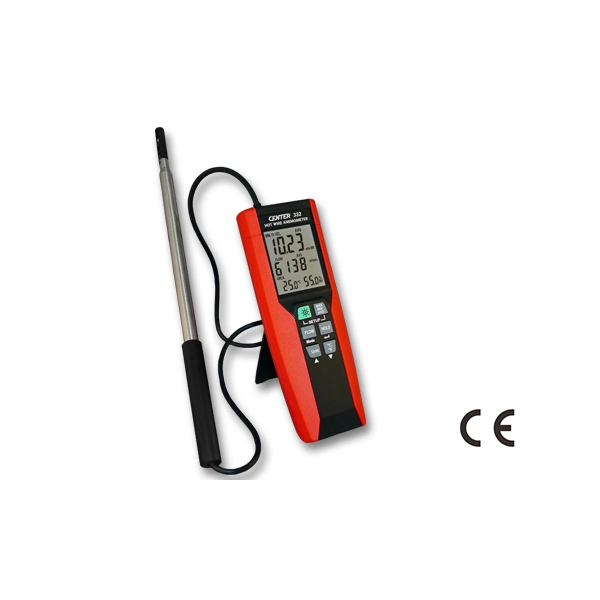How to Preserve and Care for Your Anemometer to Make Certain Durability
How to Preserve and Care for Your Anemometer to Make Certain Durability
Blog Article
All You Required to Know Regarding Anemometers: Just How They Work, Why They Matter, and Where to Use Them
Anemometers, however frequently neglected in the realm of clinical instruments, play a crucial role in various fields, supplying beneficial understandings right into wind speed and airflow patterns. Recognizing the mechanics behind these tools is crucial for anybody looking for to harness the power of this data. From meteorologists tracking weather condition patterns to designers developing frameworks with wind loads in mind, the applications of anemometers are diverse and far-ranging. As we look into the details of anemometer modern technology, we will certainly discover the internal operations of these devices, their relevance, and the key considerations when picking the appropriate anemometer for particular applications.

Anemometer Essentials
An essential tool made use of to determine wind speed and direction, the anemometer plays an essential role in meteorology and different markets. An anemometer generally contains three or 4 mugs that rotate in the wind, a vane that directs into the wind, and sensors to track the motions or rotations. By determining the turnings or activities over a specific time period, the anemometer can figure out wind rate. The vane helps determine wind instructions by directing into the wind, giving beneficial information for weather condition forecasting, aviation, maritime procedures, environmental tracking, and wind energy applications.
There are different types of anemometers readily available, including mug anemometers, vane anemometers, hot-wire anemometers, and sonic anemometers, each with its special attributes and applications. Cup anemometers are typically utilized for fundamental wind rate dimensions, while vane anemometers are favored for directional dimensions.
Principles of Anemometer Operation
Building on the foundational understanding of anemometer basics, the principles of anemometer operation elucidate the technicians behind wind rate and instructions dimensions. Anemometers operate on the concept of air flow influencing a sensing unit, causing it to turn. Mug anemometers, for example, have 3 or even more cups that catch the wind, triggering them to spin much faster as the wind rate increases. The turning speed is then transformed into a wind speed dimension. Vane anemometers, on the various other hand, utilize a tail or a probe that aligns itself with the wind direction, offering a measurement of wind instructions based on the positioning of the sensor. Hot-wire anemometers depend on a warmed wire that cools down as wind overlooks it, with the price of cooling down figuring out the wind speed. Ultrasonic anemometers measure wind speed and instructions by analyzing the moment it takes for ultrasonic signals to travel in between transducers. Recognizing these concepts is vital for accurate and reliable wind dimensions in numerous applications.
Importance of Anemometers
The value of anemometers in weather forecasting and different markets can not be overemphasized. Anemometers play a critical function in determining wind rate and useful reference direction, giving necessary information for weather condition projecting, environment researches, ecological monitoring, and aviation procedures. Meteorologists count on anemometers to collect precise wind data, aiding them comprehend weather condition patterns, predict tornados, and problem timely warnings to the general public. In industries such as building and construction, agriculture, eco-friendly power, and maritime procedures, anemometers are utilized to enhance processes, make sure security, and increase efficiency. Wind farm drivers utilize anemometers to evaluate wind problems and take full advantage of electrical energy manufacturing from wind turbines. In the maritime field, anemometers help ship navigating by providing real-time wind info to captains, assisting them make notified choices to make certain risk-free voyages. In general, anemometers are important tools that contribute considerably to safety, efficiency, and educated decision-making in meteorology and a large range of sectors.
Applications Across Numerous Industries
In the renewable power market, anemometers play a critical function in examining wind problems for wind ranch positionings, ensuring optimum power production. Industries like building and construction and mining utilize anemometers to check wind speeds, vital for safety procedures, specifically when functioning at heights or in open-pit mines where solid winds can position hazards. In agriculture, anemometers useful content aid farmers in taking care of plant spraying by supplying real-time information on wind rate to stay clear of drift.

Choosing the Right Anemometer for Your Requirements
For general functions, a cup anemometer is ideal for gauging wind rate, while a vane anemometer offers wind direction data. Hot-wire anemometers are excellent for low airspeed measurements, and ultrasonic anemometers use high accuracy and longevity.

Final Thought
To conclude, anemometers play a crucial role in measuring wind rate and direction throughout various sectors. Recognizing the principles of anemometer operation is essential for picking the best tool for certain needs. From weather forecasting to air travel, anemometers are vital tools for making certain and accumulating exact information security in various applications. It is essential to consider the value of anemometers in order to make educated decisions when choosing one of the most ideal device for determining wind problems.
There are numerous types of anemometers offered, consisting of mug anemometers, vane anemometers, hot-wire anemometers, and sonic anemometers, each with its one-of-a-kind features and applications. Mug anemometers are commonly made use of for standard wind speed measurements, while vane anemometers are preferred for directional YOURURL.com measurements. Hot-wire anemometers are ideal for reduced airspeeds, and sonic anemometers are excellent for high-precision dimensions in research and industrial setups.Building on the fundamental understanding of anemometer fundamentals, the principles of anemometer procedure illuminate the mechanics behind wind rate and instructions measurements. For general functions, a mug anemometer is appropriate for gauging wind rate, while a vane anemometer supplies wind instructions information.
Report this page